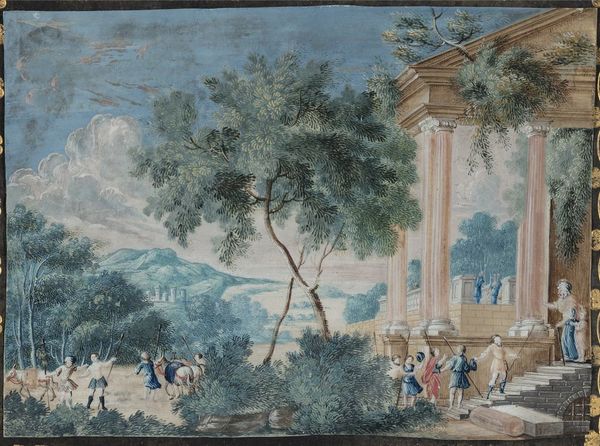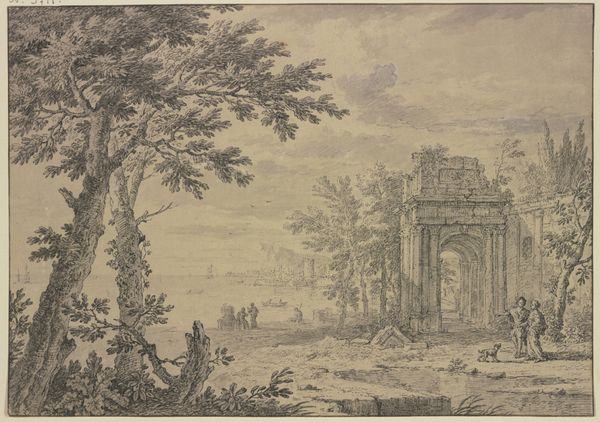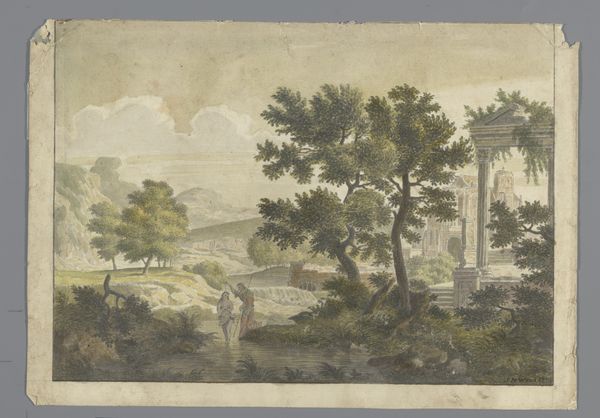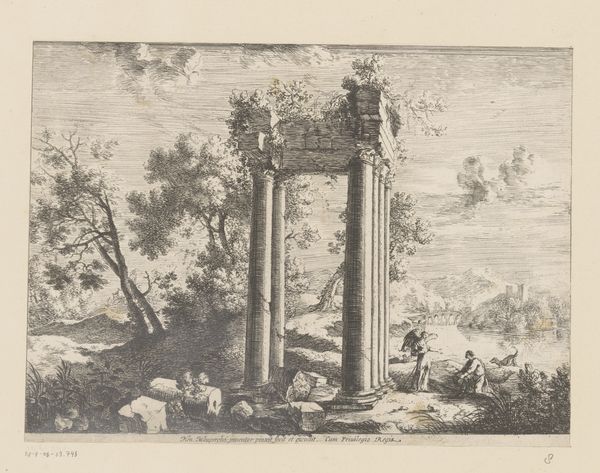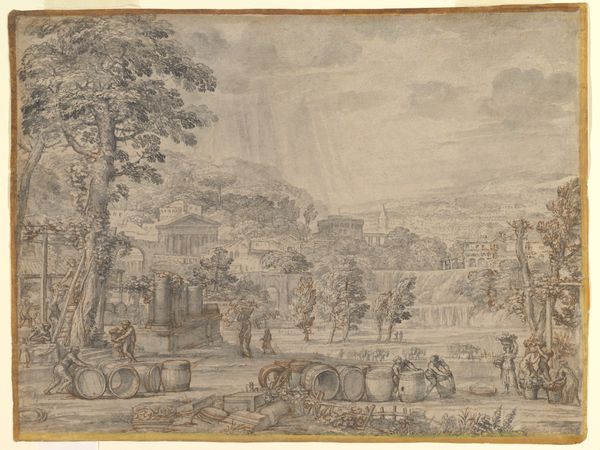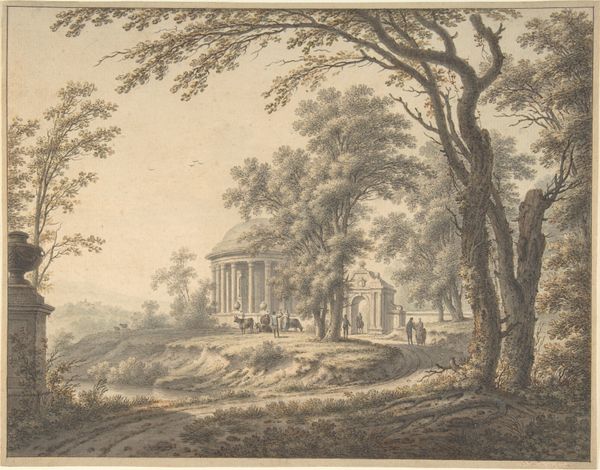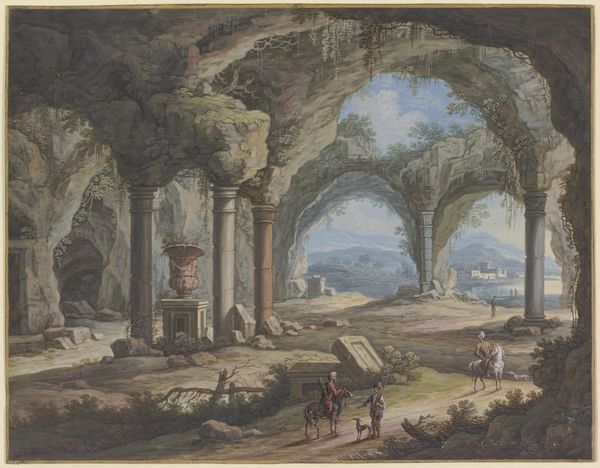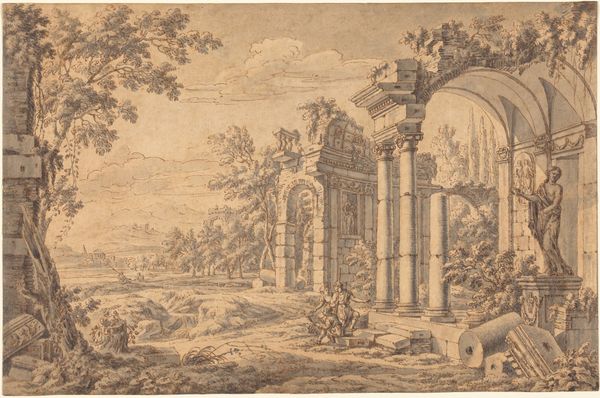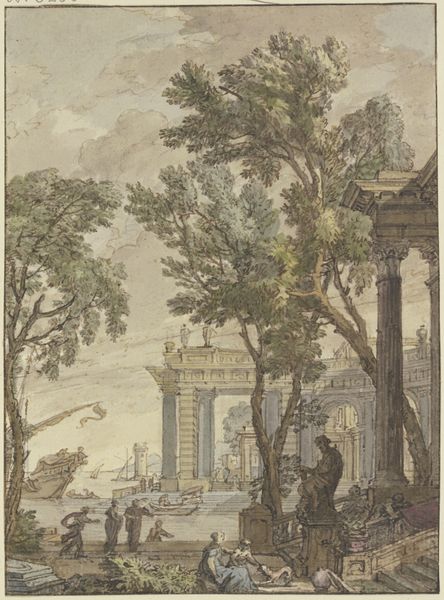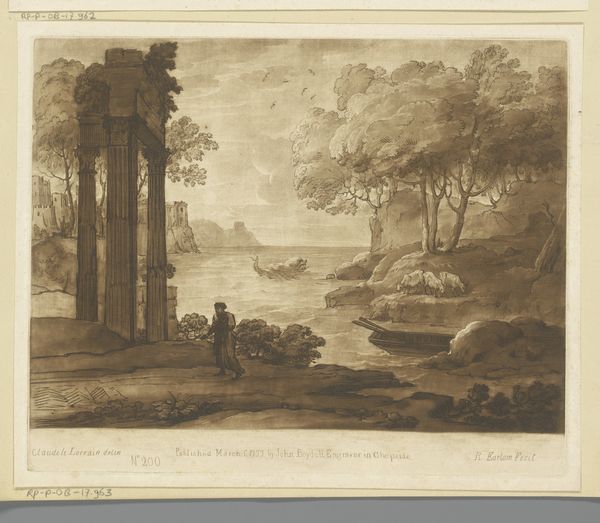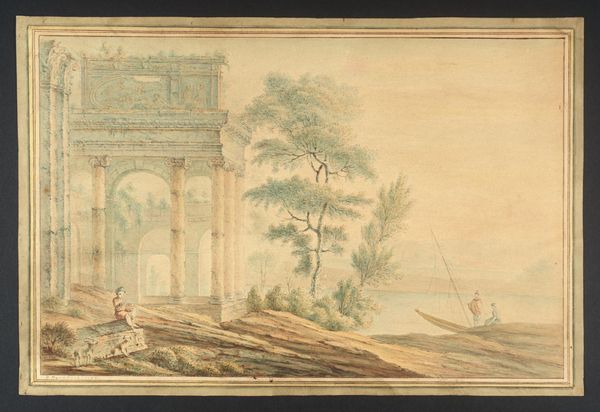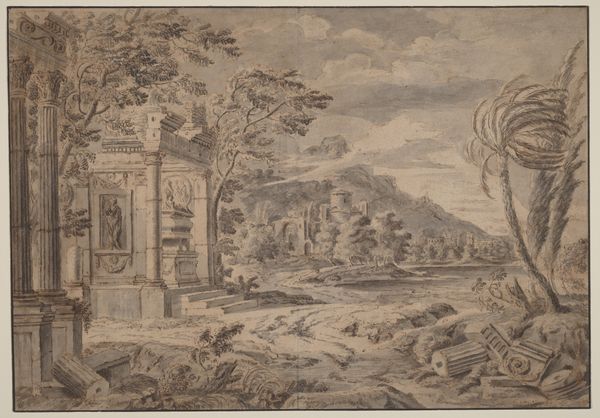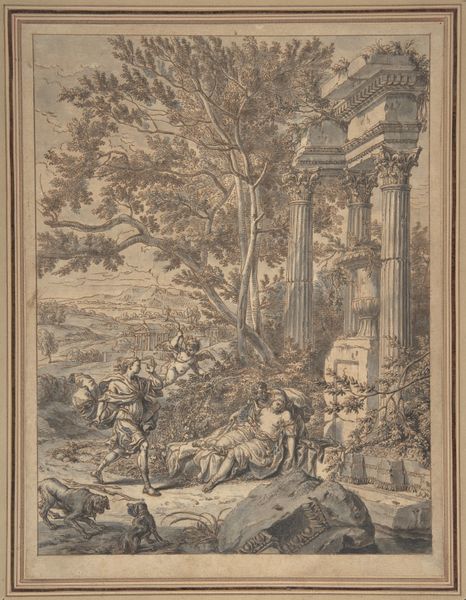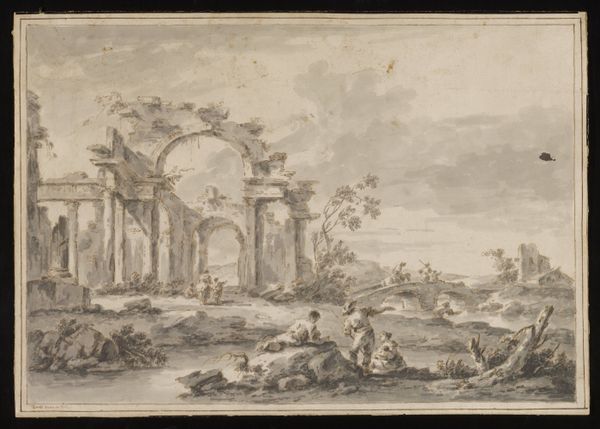
Landskab med udsigt til bjergene, t.h .i forgrunden en søjlehal, hvoraf en olding og en dreng træder ud. T.v. bønder med æsler. 1675 - 1775
0:00
0:00
gouache
#
baroque
#
gouache
#
landscape
#
classical-realism
Dimensions: 114 mm (height) x 176 mm (width) (billedmaal)
Curator: This is an intriguing gouache painting attributed to Schröder, dating somewhere between 1675 and 1775. Its full title is quite a mouthful: "Landscape with a view of the mountains, to the right in the foreground a column hall, from which an old man and a boy step out. To the left, peasants with donkeys." Editor: That’s quite a lot to unpack. The initial feel is a blend of serenity and something subtly unsettling. There's this overgrown classical structure, clearly ancient, juxtaposed against everyday peasant life. Curator: Indeed, that contrast is key. Notice how the ruined column hall acts as a powerful symbol. It immediately calls to mind the glories of the classical world, but also their inevitable decay and absorption into nature. This wasn't merely depicting a pretty scene, but also contemplating themes of time and change. Editor: The presence of the old man and boy exiting the ruins is also important, isn't it? Are we seeing a representation of the cyclical nature of power and legacy, the passing down of knowledge? There's perhaps an implicit comment on the enduring nature of cultural memory. Curator: Precisely. Consider, too, the other figures in the composition. They seem completely unaffected by the ruin’s grandeur. This underscores a sort of democratization of the landscape, the sacred structure now part of their everyday surroundings. Editor: The gouache technique itself seems relevant here. Its delicacy contributes to a sense of wistful contemplation. Unlike the grand scale of an oil painting intended for powerful patrons, this medium speaks of intimacy, quiet observation. It could function as a personal meditation. The colours—a subdued palette of blues and greens— adds to that melancholy air. Is it romanticising poverty and pastoral labour to some degree? Curator: Perhaps, but through its carefully crafted arrangement of symbols, this work evokes a complex tapestry of ideas about antiquity, memory, and the ever-changing present. It allows you to consider history, landscape and their meanings to social structures across time. Editor: Absolutely. It reminds us that history is always a dialogue between past and present, grandeur and mundanity, ruins and resurgence. It makes me wonder who inhabited such place over time. Curator: Ultimately, Schröder gifts us a chance to witness how symbolic landscapes preserve layered experiences. Editor: And reveal that how we look upon even seemingly peaceful scenes carries both historical baggage and continuing possibilities for contemporary discourse.
Comments
No comments
Be the first to comment and join the conversation on the ultimate creative platform.
